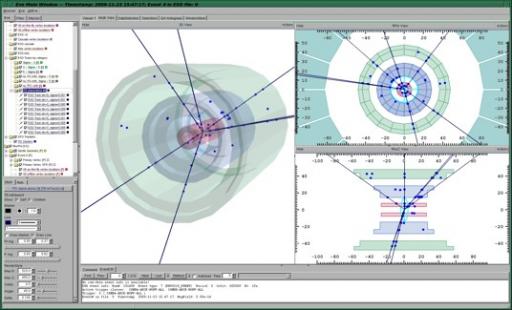Monday, 23 November 2009, marked the first particle beam collision inside the large detectors of the LHC. ALICE saw its first collisions at an energy of 900 GeV, enabling it to check for correct operation of the 18 large detectors which comprise it. Since 27 November, with just a few days worth of data, the collaboration has even published an article confirming some existing measurements. The group from the IRFU, who are responsible for the dimuon arms, had to await more stable beam conditions in order to see their detectors reacting to the data coming from the collisions and, on 6 December, all the gaseous detectors were able to be powered up. The traces from the first muons could be successfully reconstructed, to the great satisfaction to all the team. They are now eager to begin collecting more data after the planned restart in February 2010.

Figure 1: Various views (in 3D, transverse and longitudinal cross-sections through the detector) of the first event reconstructed online in the ALICE control room. The points are the results of a reconstruction algorithm within the six silicon detection layers which form the vertex detector of ALICE. The trajectories point towards the vertex, or interaction point, indicating that they all come from the same proton-proton collision event. The first "run" was made with a zero magnetic field which is the reason that the traces are straight lines.
• Structure of nuclear matter › Quark-gluon plasma
• The Nuclear Physics Division • The Particle Physics Division



